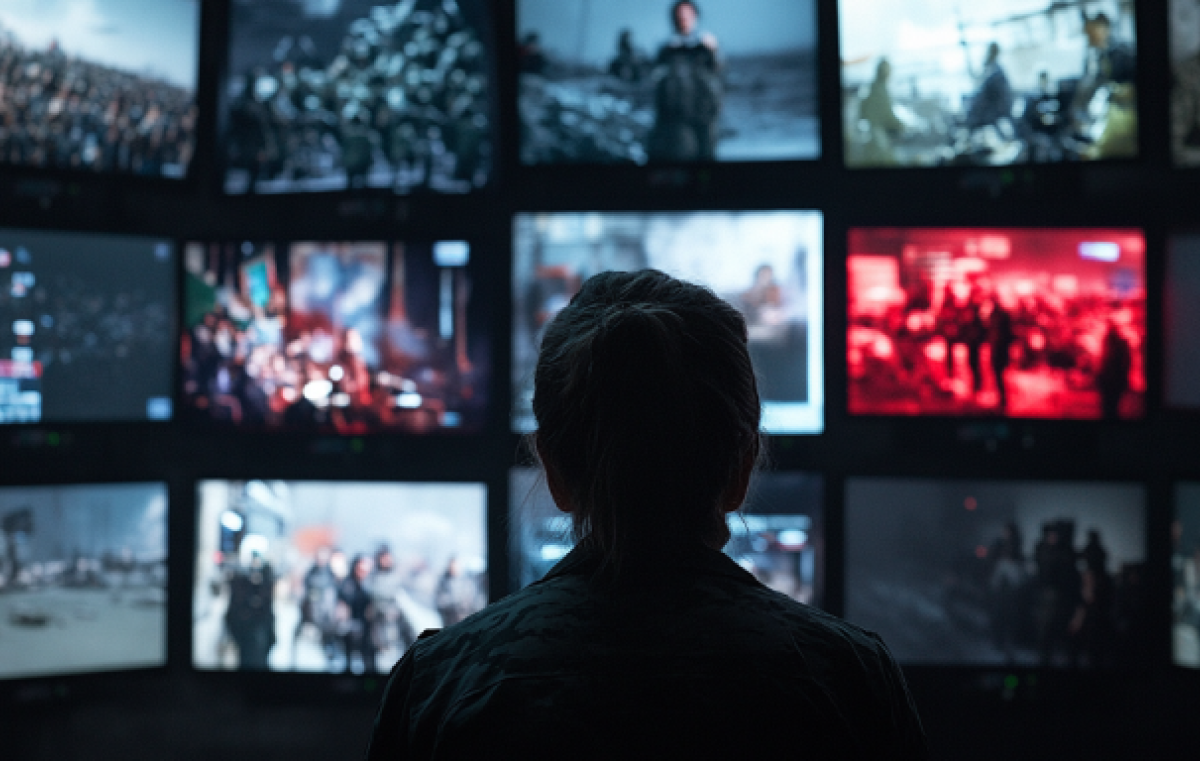When War Becomes a Reality Show
New research reveals the psychological toll of nonstop news and how to protect your mental health in times of crisis

In the first few weeks of the Iron Swords War, Dr. Gal Yavetz found himself doing exactly what he tells others not to do. A leading expert in emergency management and crisis communication, he was glued to the news, obsessively refreshing updates, unable to look away.
"I was in deep anxiety, like everyone else," he recalls. "And I felt like the cobbler without shoes—I knew it was harming me, and I still couldn’t stop."
But Yavetz is also a researcher. So he turned that moment of personal unraveling into a question: What happens to a nation when it consumes news at this scale, under these conditions?
Anxiety, amplified by the screen
Yavetz partnered with iPanel to conduct a nationwide survey during the fourth and fifth weeks of the war. The sample included 504 Jewish and 141 Arab participants, who answered the GAD7 anxiety questionnaire, an internationally recognized tool also used by Israel’s Ministry of Health to assess situational anxiety.
Some results were expected: daily news consumption spiked dramatically. But what stood out was a strong correlation between media consumption and anxiety levels.
The tipping point? Three hours a day.
“People think that consuming more news will help them feel safer,” says Yavetz. “But the data show the opposite: the more media people consumed—especially beyond the three-hour mark—the higher their anxiety. Their sense of safety and autonomy didn’t increase. It collapsed.”
Searching for control in a media storm
One of the study’s more revealing findings came from a follow-up survey conducted on the night of Iran’s drone attack in April. Once again, as screen time went up, anxiety followed.
“It was like a real-time countdown,” Yavetz says. “News coverage turned it into a kind of reality show—where will it hit, how much time is left. People weren’t just watching the news. They were caught in a cycle, trying to reclaim control through information. But it only heightened the panic.”
This cycle, he explains, is deceptively simple: anxiety drives people to seek information; information overload drives more anxiety.
Telegram in, then out. TV reigns.
The survey also explored how people accessed news during the war. At the start, 73% of Jewish participants downloaded Telegram, hoping to bypass filters and access unedited footage and firsthand reports. But a month later, fewer than 40% were using it daily.
In contrast, traditional TV news made a comeback across all age groups. “We thought it would mostly appeal to older audiences,” Yavetz says, “but daily TV consumption was consistent from age 18 and up.”
So what’s the bottom line?
While the research stops short of proving direct causation, the patterns are clear: people who consumed more than three hours of media per day—and did so out of a desire to feel safer—reported significantly higher anxiety levels.
“I’m not saying disconnect completely,” Yavetz emphasizes. “It’s important to stay informed. But there’s a clear threshold, and when you cross it, you’re putting your mental health at risk. We need to treat news consumption the same way we treat other forms of exposure: with awareness, limits, and care.”
The Israeli Internet Association has since made the research publicly available in its national data repository, in hopes it will inform future policy and help both local and international scholars understand how media behavior changes during wartime.